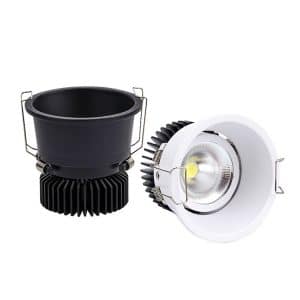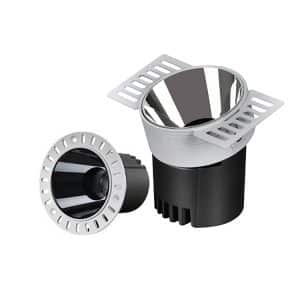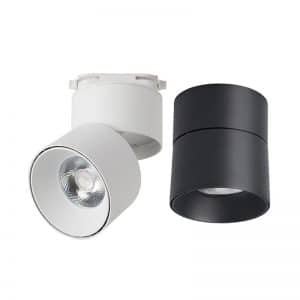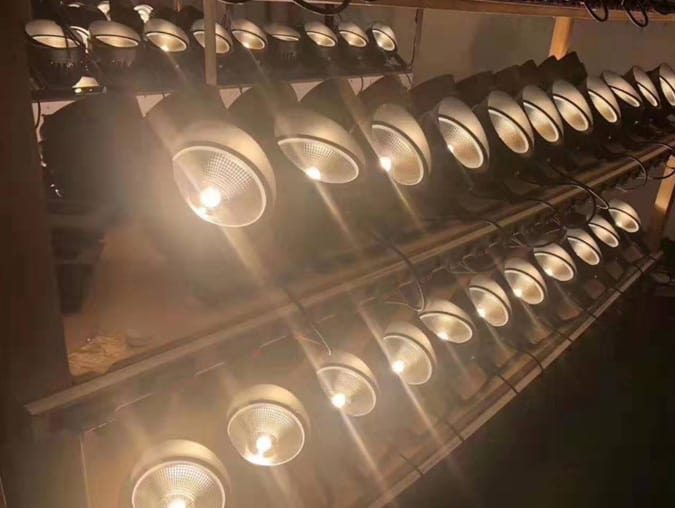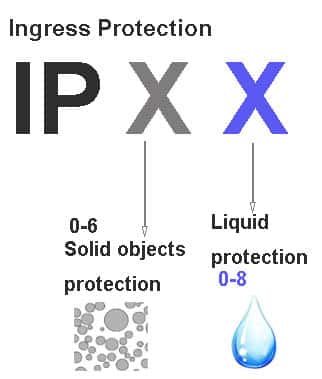In the world of lighting, the quest for perfection often drives us to find ways to enhance the functionality and aesthetics of our living and working spaces. A major progress in this area is the appearance of anti glare LED lights. When doing lighting design, especially for indoor lighting, we always emphasize the need to anti glare. So, what exactly is the glare mentioned here, and what are the types of glare? How to solve the problem of glare? Let’s take a look together.
What is glare in illumination, and the harms of glare
Glare is a visual condition that causes visual discomfort and reduces the visibility of objects due to inappropriate brightness distribution in the field of vision, or extreme brightness contrast in space or time. Simply put, any harsh and uncomfortable light that makes people feel glaring can be called glare. The normal line of sight for the eyes ranges from looking straight ahead to 30° above and 60° below. Glare occurs within this range and can be described as any light that is glaring.
Glare is one of the primary factors affecting the health of the visual environment. Long-time exposure to glare can cause various issues, eyes will be sore and tired, and the eyesight will decrease in severe cases, causing irreversible damage to the eyes.

5 Typical Anti glare Ceiling Lights GRNLED Manufacture
All our LED light fixtures are factory direct selling. No matter whether you need deep recessed, timeless embedded, or surface mounted low glare downlights, welcome here, we will show you our full range of products.
Types of Glare in Lighting
Glare can be divided into direct glare and reflected glare. Direct glare refers to the dazzling sensation experienced when the eyes are directly exposed to a high-brightness light source. Reflected glare refers to the irritating glare caused when a light source shines directly on a smooth, flat surface and then reflects into the eyes.
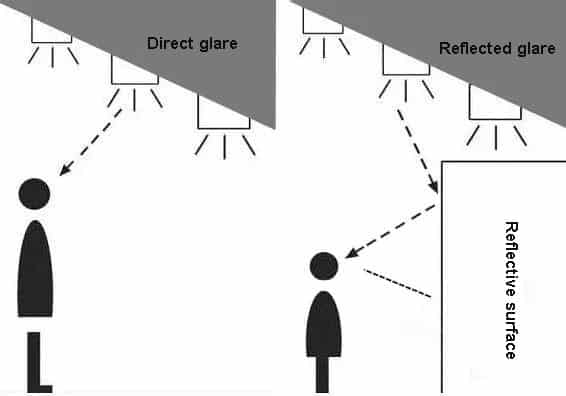
7 Effective ways to reduce the glare of LED lights
Since glare is so harmful, how can we reduce the glare of LED lights?
The glare partly comes from the optical design of the lamp, including the primary design of the light source and the secondary optical design of the luminaire itself. Some of glaring comes from the problem of installation angle too. Here are some methods commonly used for anti glare LED ceiling lights
Shading Angle>30
The shading angle of traditional lamps is typically set at a 30-degree elevation angle, which is based on the average human field of vision. When the light’s shading angle is> 30 degrees, it helps to stop direct light from entering human eyes.
Honeycomb Grid for Anti-Glare
A honeycomb grid can block light from all directions. It is the easiest to use among all anti glare accessories, but the light loss is the largest. If you want an environment with high illumination, you must add more fixtures.
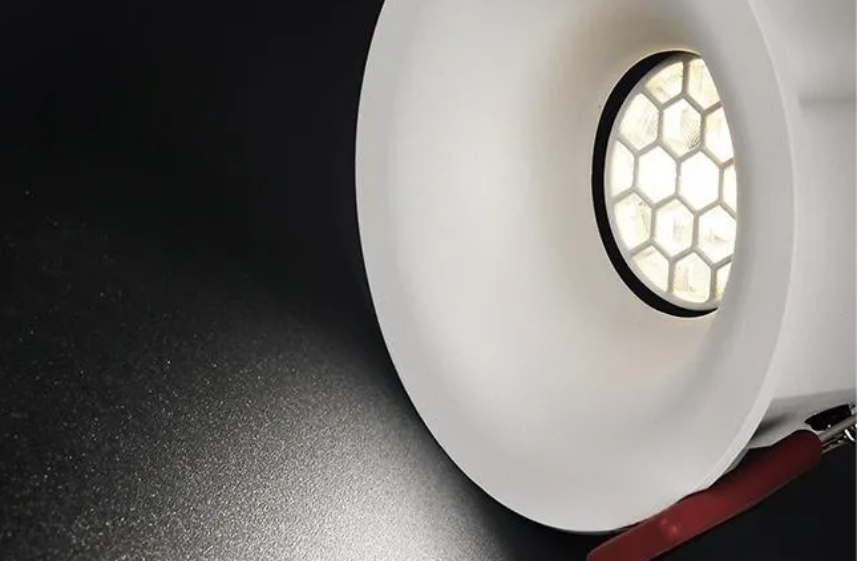
Deep hidden anti-glare
Deep hidden is to hide the light source deeper, narrow its range, and cover part of the light source to ensure that people cannot directly see the light source within a certain visual range, and reduce direct glare. It is a commonly used anti-glare method in the market. However, the height of the fixture is usually relatively high, unsuitable for places with limited ceiling height.
Black reflector
Black reflectors can absorb high-brightness light, reduce light leakage, and achieve an anti-glare effect. Matte reflectors provide better anti-glare effects compared to glossy reflectors.
Diffused glass
The diffused glass includes frosted glass, textured glass, textured and frosted glass, etc., which can reduce the brightness of the light source surface and achieve anti-glare effect to a certain extent
Shielding Blades
Light shielding blades can block light from all directions and are easy to adjust for light control, it’s the most flexible anti-glare accessories. However, the blades are relatively large and are commonly used together with track lights, which is neither beautiful nor convenient.

Cross or single-axis anti-glare light fixture
Cross or single-axis anti-glare grids are primarily designed to block light from vertical and horizontal directions, by shifting the critical glare point from the fixture’s edges to its center, thereby increasing the shading angle to achieve the goal of anti-glare.

Glare evaluation index
At present, there are various models and methods for evaluating glare, and different evaluation algorithms are used based on specific lighting application environments. For example, threshold increment (TI) is commonly used to evaluate disability glare in road lighting, and unified glare index (UGR) is commonly used to evaluate uncomfortable glare in indoor workplaces. In addition, other indices for evaluating discomfort glare include the Glare Rating (GR), British Glare Index (BGI), CIE Glare Index (CGI), and more.
The basic research work on the glare model is still in progress. especially, the principles and characteristics of LED lighting have posed challenges to the universality of glare evaluation methods. Some research has aimed to adapt existing glare assessment methods for LED lighting, but a unified and generally accepted conclusion has not yet been formed.
Taking UGR as an example, let’s analyze the determining factors of the glare index, the calculation formula is:
UGR = 8 * log10 [Σ(Li * Gi) / Lb]
Note: If the light fixture has a small light source, the calculation formula for UGR may have slight differences
UGR: Unified Glare Rating.
Li: Luminance of each light source, measured in cd/m2.
Gi: Glare perception coefficient for each light source. This coefficient depends on the observer’s position and the position of the light source.
Lb: Background luminance, measured in cd/m2. This is the ambient brightness from non-illuminating sources.
The UGR calculation considers all visible light sources and evaluates the level of glare based on their positions and luminances. UGR values are typically used to assess whether indoor lighting systems cause uncomfortable glare, with lower UGR values indicating less glare and a more comfortable lighting environment. UGR values typically range from 10 to 30, with lower values indicating less glare.
It’s important to note that UGR calculations are based on specific formulas and standards and require precise measurements and calculations of all parameters to obtain an accurate UGR value.
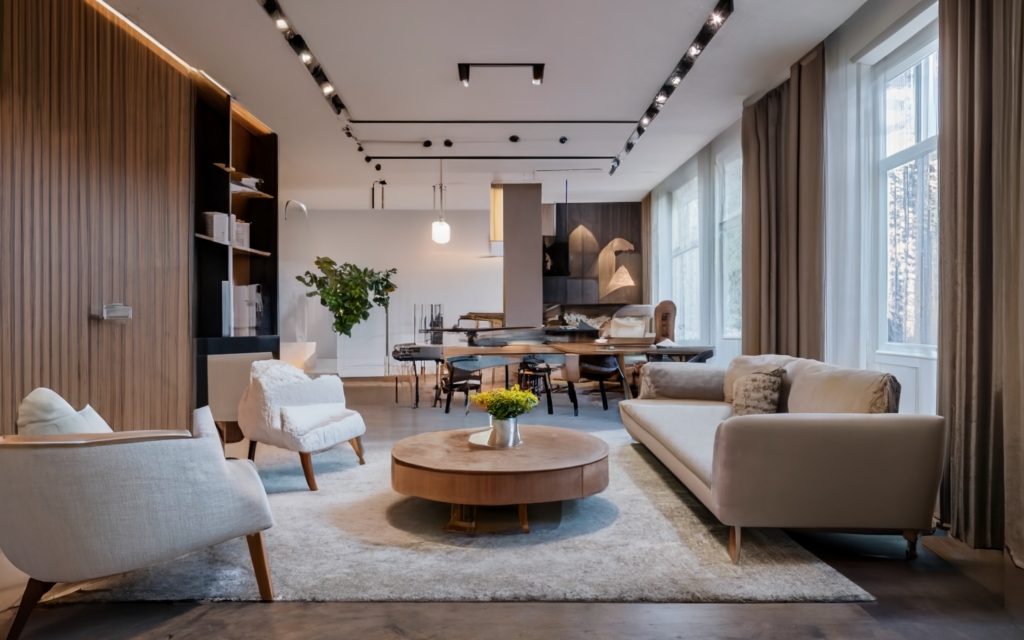
Glare values in different areas
In 2014, the European Union made UGR limits a mandatory standard for lighting fixtures, not just as a reference as before. As early as 1995, the CIE (International Commission on Illumination) introduced the concept of anti-glare for lighting fixtures and adopted UGR as an indicator of uncomfortable glare in indoor lighting environments.
| Application area | UGR Limits |
| Factory, Power plant, Control room | 16 |
| Office, Design, and drafting room | 16 |
| Airport, Control tower | 16 |
| Daily office space | 19 |
| Meeting room, School | 19 |
| Classroom | 19 |
| Hospital, Ward | 19 |
| Convenience store, Sales area | 22 |
| Restaurant, Hotel, Dining area, Banquet hall | 22 |
The so-called UGR<19 is the most basic glare requirement. In fact, in actual use, customers will choose lights with lower UGR. Because UGR=19 means uncomfortable. The lower the UGR value of the workplace and study place, the better.
GRNLED offers various anti-glare lighting fixtures. Not only anti-glare ceiling lights, but also anti-glare flood, and anti-glare high bay LED lights. Consult us for more about our product range.

Hello, customers
My name is Ricky Wang, I’m the business manager of GRNLED. I have been in LED lights industry for more than 10 year. Feel free to contact us. I’m happy to provide you the best service and products.
Email: info@grnled.com | WeChat: ledfixture


